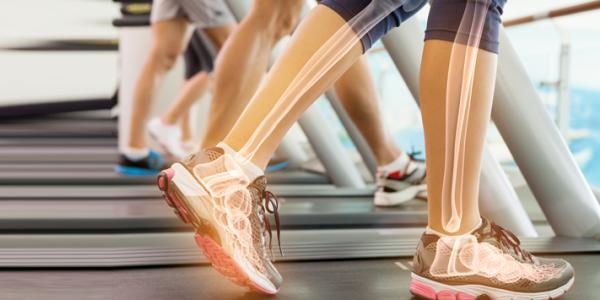In fact, in the first five years after menopause, when estrogen levels have dropped, many women lose up to 20% of their bone mass. The more bone density you have built up earlier in life, the less likely you are to develop osteoporosis as a result of this gradual loss. But if exercise and a nutritious diet haven’t been priorities for years, or if you are a smoker or drink more than the occasional glass of wine, you’ll have a higher risk of developing osteoporosis as you age.
The first thing to do is get a bone density scan to determine the strength of your bones. The U.S. Preventive Services Task Force recommends women get a bone mineral density test (BMD test) at age 65, or earlier if they are at higher risk for fractures. (Note that Medicare generally pays for a baseline screening for women at age 65, and additional screenings every two years after that.) Based on the results of the test, your doctor can determine your current bone strength, and recommend appropriate action. If you do have post-menopausal osteoporosis, you may be prescribed medications that can build bone strength and reduce the risk of fractures by 50%. It’s also important to talk to your doctor about any other medications you take, and the impact they may have on your bones. Many drugs that treat issues common in women over the age of 65, such as thyroid disorders or arthritis, may contribute to weakening bones.
No matter what your bone health is, there are things you can do now to help maintain strength and decreasing the rate of thinning. Consuming enough calcium is the first step, and you should aim for at least 1,200 milligrams every day. Low-fat dairy, sardines and salmon, dark green leafy vegetables such as spinach and kale, and calcium-fortified products such as juice and cereal are all great sources of calcium. Many of these products also contain additional vitamin D – which your body needs in order to absorb calcium. In fact, without enough vitamin D, your body could lose up to 4% of your bone mass every year. While a healthy diet is important, the biggest source of vitamin D comes from sunlight. Just 15 minutes of exposure to the sun every day can be enough, but if you don’t spend any time outdoors or are diligent about slathering on sunscreen, you should also take a vitamin D supplement daily. And if you need to take supplemental calcium to fill in any nutritional gaps in your diet, take one that contains vitamin D to ensure absorption.
Another great way to increase bone density is with exercise. In addition to the host of other health benefits, weight-bearing and resistance exercises will help strengthen your bones. Walking is a great option that most women of all ages can do – and it’s easy on the joints. Aim for 30 minutes a day to get the most benefit. Other gentle types of exercise such as tai chi and yoga are also very options, and can help build muscles which also helps build bone strength. The key is to find something that you enjoy, and can do on a regular basis.
Osteoporosis – and the fear of fractures and falling – isn’t a normal and inevitable part of aging. Understanding your risks, knowing your current bone strength, and taking steps to increase or maintain your bone mass can help you stay healthy, strong, and able to move through your day without fear.

